Published August 30, 2023
How to Docusign a PDF (Beginner Guide)
In today's digital age, the traditional process of signing physical documents with pen and paper has evolved into a more efficient and streamlined method known as electronic signatures.
DocuSign, a widely recognized and trusted electronic signature platform, enables users to electronically sign documents, eliminating the need for printing, scanning, and mailing. Whether you're a business professional, a remote worker, or simply looking to simplify your PDF file signing process, this step-by-step guide will walk you through the process of DocuSigning a PDF.
Step 1: Create a DocuSign Account
Before you can begin DocuSigning PDFs, you'll need to create a free account on the DocuSign platform. You can do this by visiting the DocuSign website (www.docusign.com) and following the registration prompts. You may need to provide your name and email address and create a secure password. Once you've logged into your DocuSign account, you'll be directed to the dashboard.
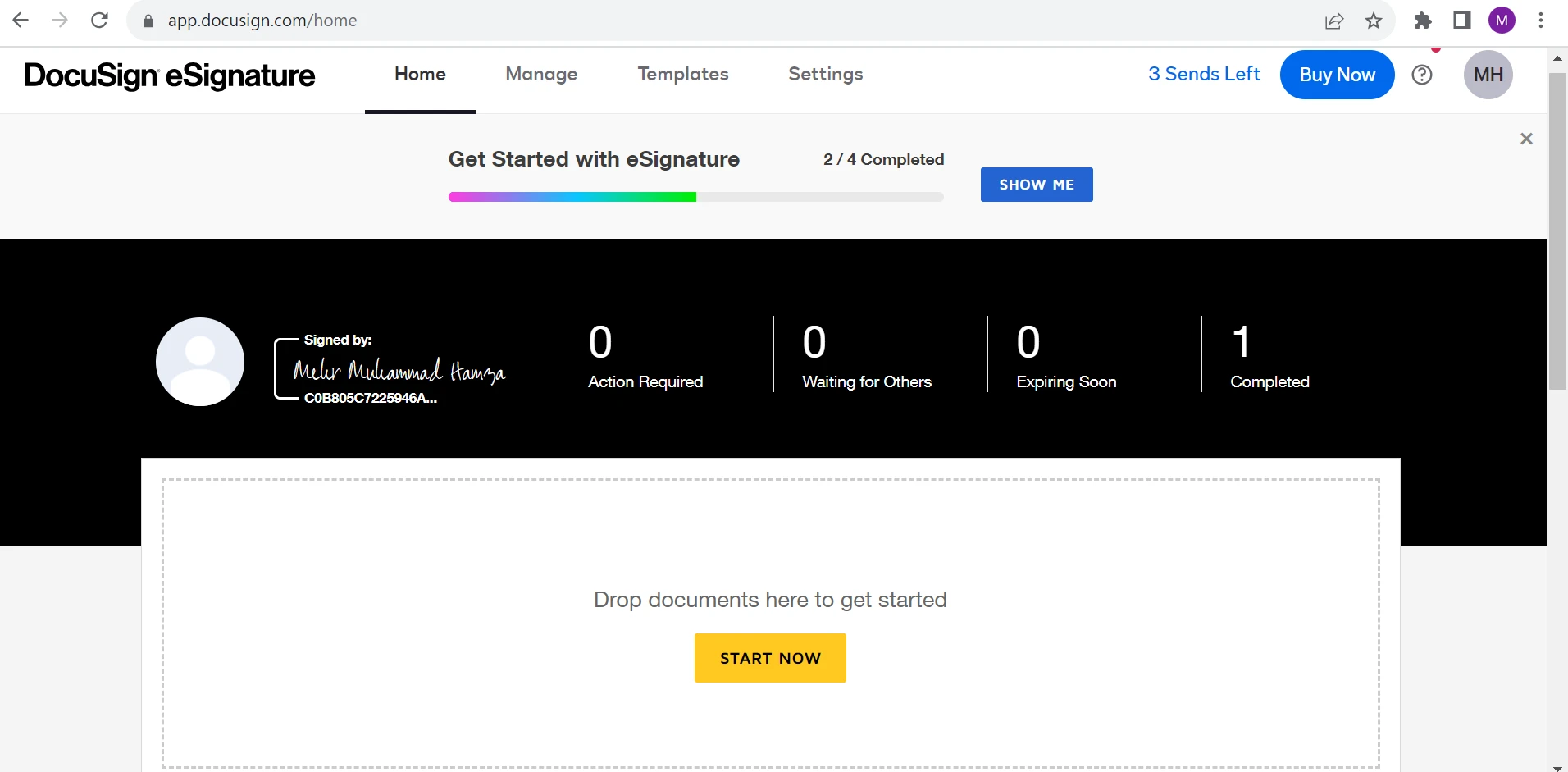
Step 2: Upload Your PDF Documents
To start the signing process, click on the "Start Now" button. You'll then be prompted to upload the PDF document that requires your signature.
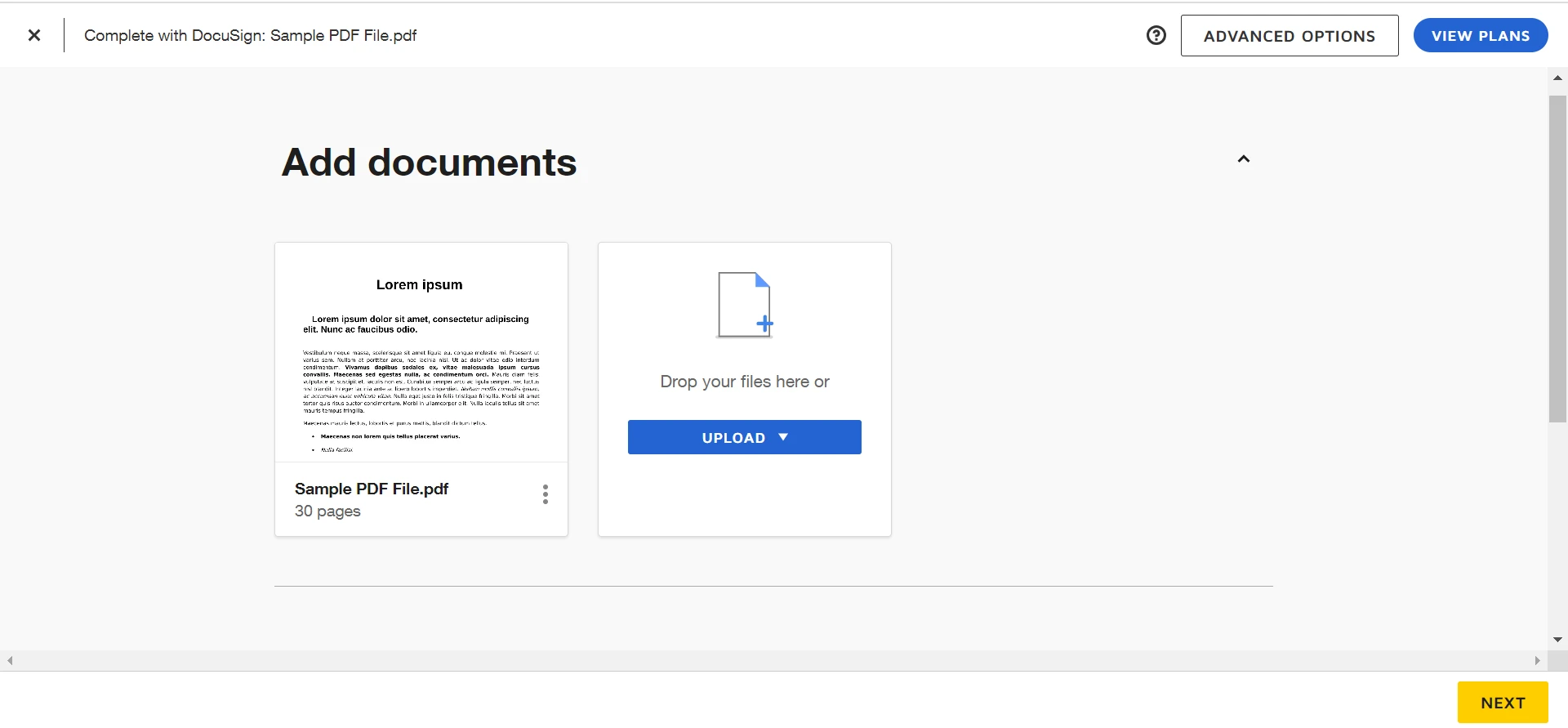
You can also upload multiple PDF documents to sign PDFs electronically.
Step 3: Add Signer Information
After uploading the document, you'll need to specify who needs to sign it. Enter the recipient's email address and name, and indicate their role in the signing process (e.g., signer, approver, etc.). You can also add a personal message if desired. If the document requires multiple signatures, you can add additional signers and assign their signing order. You may check "I'm the only signer" if you just want to sign a PDF document.
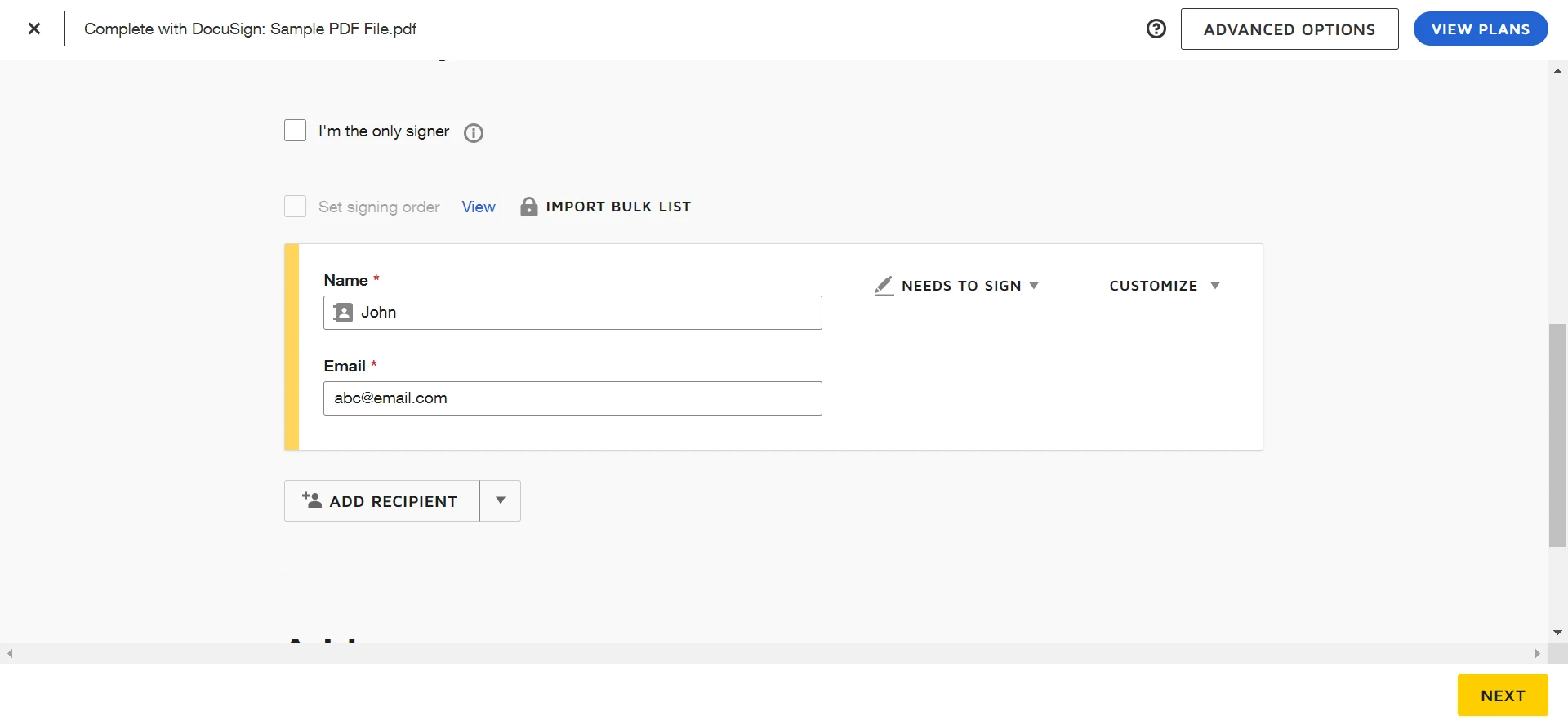
You can add multiple recipients and define who needs to sign and who just needs to view or receive the copy.
Step 4: Add Message
Next, you'll need to add an Email Subject and Email Message. Write the Email Subject and Message about the need for document signing and click on the "Next" button.
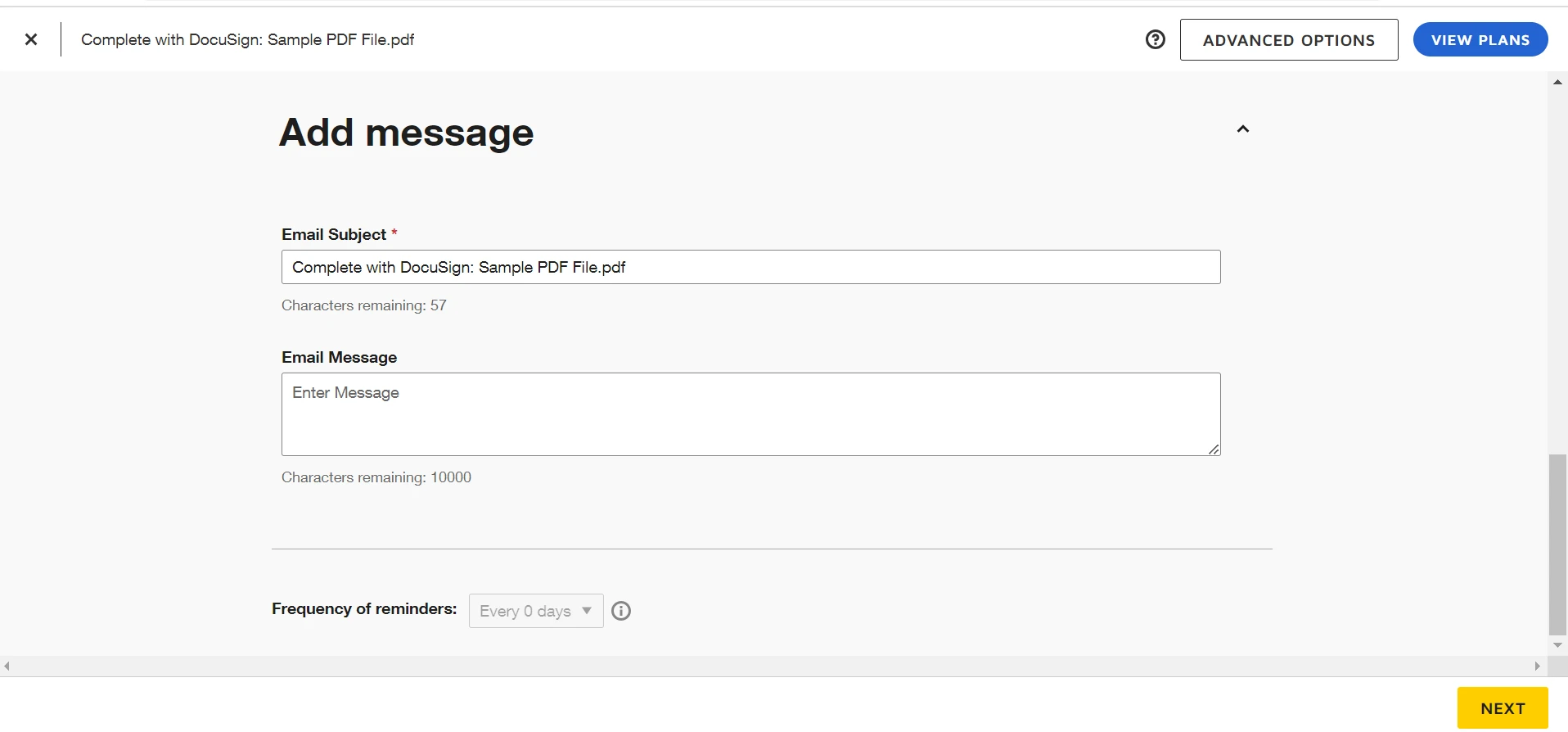
Step 5: Place Signature Fields
Next, you'll need to indicate where signatures are required within the PDF document. DocuSign provides various fields for different types of signatures, including standard signatures, initials, tamp, dates, and more. Simply drag and drop these fields onto the appropriate locations within the PDF.
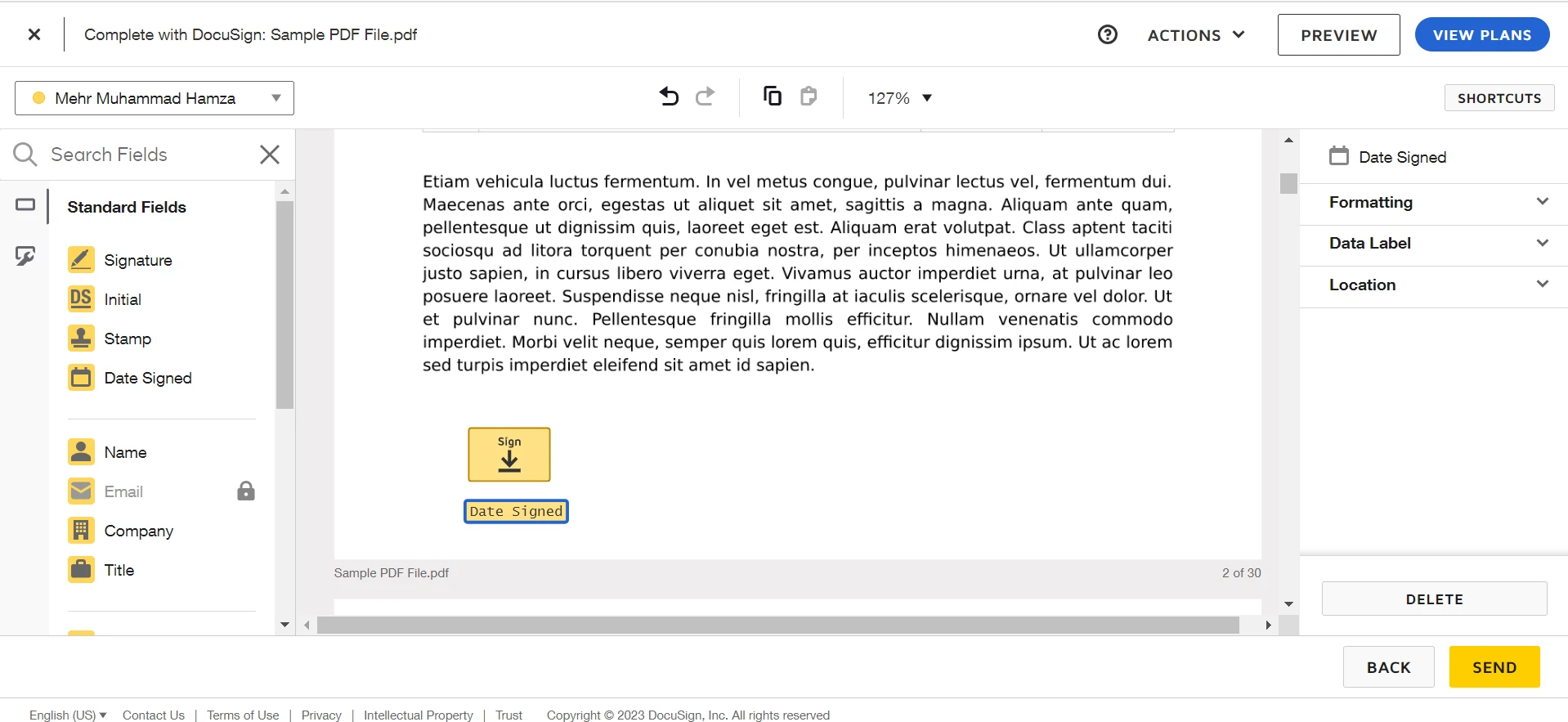
Step 6: Review and Send
Before sending the document for signing, take a moment to review the recipient's information, the placement of signature fields, and any other details. Ensure that everything is accurate and in order. Once you're satisfied, click the "Send" button to send PDFs.
Step 7: Sign the PDF Document
Once the recipient receives the email notification, they can click the provided link to access the document. DocuSign will guide them through the process of signing each designated field.
Step 8: Complete the Process
Once all required signatures and fields have been filled out, the document is considered fully executed. DocuSign will automatically generate a finalized version of the PDF with the electronic signatures in place. This version is legally binding and can be downloaded and saved for your records.
DocuSign retains a copy of the executed document within your account. You can access and download important documents at any time. It's recommended to download a copy for your records and archive it in a secure location.
Add an Electronic Signature to a PDF
For those seeking a programmatic approach to digital signatures, the IronPDF library stands as an invaluable resource. To proceed further, let's have an introduction about IronPDF.
DocuSign Pricing
DocuSign's pricing includes personal plans starting at around $10/month with basic e-signature features, Standard plans for $25 per user per month offering advanced features like branding and collaborative commenting, as well as Business Pro Plan for $40 per user per month suitable for larger organizations with enhanced security, payment, and bulk send. Custom plans are available for specific needs, potentially including API access and integrations. Please refer to the official DocuSign website for the most up-to-date pricing information.
IronPDF
IronPDF is a versatile .NET library that empowers developers to effortlessly generate, manipulate, and interact with PDF documents within their applications. With its intuitive API, IronPDF enables the creation of dynamic PDFs from various data sources, HTML content, and images. It also facilitates advanced features such as digital signatures, form filling, and text extraction, making it a powerful tool for seamlessly integrating PDF functionality into software solutions.
Install IronPDF Library
Initiate your IronPDF journey by seamlessly installing the library. Open or create a new project in Visual Studio. Type the following command in Package Manager Console.
```shell
:ProductInstall```shell
:ProductInstall'INSTANT VB TODO TASK: The following line uses invalid syntax:
'```shell :ProductInstall
### Digitally sign a PDF using IronPDF
Write the following code to digitally sign a PDF file.
```cs
using IronPdf;
//Step 1. Create a new PDF or load and edit an existing document.
PdfDocument pdfDocument = new PdfDocument(@"D:/Sample PDF File.pdf");
// Step 2. Create a Signature.
// You may create a .pfx or .p12 PDF signing certificate using Adobe Acrobat Reader.
// Read: https://helpx.adobe.com/acrobat/using/digital-ids.html
var signature = new IronPdf.Signing.PdfSignature("Iron.pfx", "123456")
{
// Step 3. Optional signing options and a handwritten signature graphic
SigningContact = "john@email.com",
SigningLocation = "Chicago, USA",
SigningReason = "To show how to sign a PDF"
};
//Step 3. Sign the PDF with the PdfSignature. Multiple signing certificates may be used
pdfDocument.Sign(signature);
//Step 4. The PDF is not signed until saved to file, stream, or byte array.
pdfDocument.SaveAs("signed.pdf");In this way, we can add an electronic signature and sign the PDF electronically. This can be utilized when signing documents in bulk. You can then share a signed document or save it. IronPDF lets you select a signing certificate, sender information, password, etc.
Conclusion
In a world where efficiency and convenience are paramount, electronic signatures have revolutionized the way we sign and manage documents. DocuSign provides a user-friendly platform for electronically signing PDFs, simplifying workflows, and reducing environmental impact. Additionally, IronPDF offers a robust solution for programmatically adding digital signatures to PDFs directly from your applications, adding a layer of customization and control. By following the steps outlined in this comprehensive guide, you can confidently embrace these technologies to streamline your document signing process and enhance your digital workflows.
IronPDF is used by hundreds of millions of developers and is available for commercial use. It also offers a free trial license.











